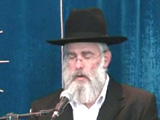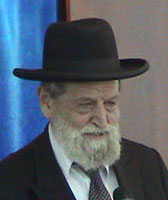Beit Midrash
- Torah Portion and Tanach
- Bamidbar
- Naso
Having devoted the entire ספר ויקרא to the Mitzvot of holy living symbolized by the erection of the Mishkan, the early chapters of ספר במדבר describe the societal structure of the Jewish people and the influence that the Mikdash has upon the people. The Torah now returns to the day of the Mishkan's completion and its dedication as the house of God. The leaders of the tribes who were in essence the national leaders also seek closeness with God. This effort to attain closeness translates into a series of gifts that each leader brings to the Mishkan.
These verses provide an opportunity to understand the types of political leadership necessary for the nation at the time of the completion of the Mishkan. These national leaders are described by titles, and there are three titles that are mentioned: נשיאי ישראל, ראשי בית אבותם, נשיאי מטות. Each of these titles indicates different areas of political power, all of which were required for achieving national status.
The basic level is ראשי בית אבותם/heads of parents' clans. The power base of the leadership consisted of the multiple family clans that traced their lineage to a single ancestor. Within that framework they had gained the respect and confidence of the members of these united families and could speak on their behalf. In this capacity they determined all internal tribal affairs and issues. Their position was a type of "governorship."
The word ראשי is from the root ר-א-ש which means "to begin to animate." The head of an organism or a political body animates and moves the entity to action. The word בית is from the root ב-י-ת which means "to contain" as in a home or clan. The word אבותם is from the root א-ב-ה "to submit to demand" as from the parents and ancestors.
The second level of political influence and power is referred to as נשיאי ישראל/princes of Israel. In this position they served as the formal leaders of the שבטים/tribes. This level of leadership dealt with matters external to local tribal issues. The word נשיאי is from the root נ-ש-א which means "to raise up," and it is used with a double meaning in our context. The נשיאים had been raised to positions of national importance, and they had been given the mission of raising the level of sensitivity of each tribe to the goals and aspirations of the entire people. Their position gave them the opportunity and power to succeed in building the nation.
The word שבטים is from the root ש-ב-ט which means "to control". A tribe is a self contained and controlled segment of a nation.
These two levels of ראשי בית אבות and נשיאי ישראל enabled the political leaders to reach the third level: נשיאי המטות/princes of the branches of the nation. A מטה is a branch extension of the nation. As נשיאי המטות, these leaders faced the dual task, of maintaining the individuality and particular characteristics of their respective tribes while projecting the common national spirit within the tribe.
The word מטות is from the rootנ-ט-ה which means "to extend over a surface".
The tribal contribution of the שש עגלות צב, the six covered wagons, to the Mishkan supports this emphasis on the national rather than the particular. The נשיאי ישראל teamed up in order to provide the vehicles for the transport of treasures and valuables of the Mikdash. Individual tribes did not contribute wagons. The wagons were provided by groups of two tribes per each wagon..
The word עגלות is from the root ע-ג-ל "to circle." The wagon had round wheels. The word צב is from the rootצ-ב-ב which means "to cover while in motion." The wagons had rounded sides that served to contain and protect articles stored in the wagon.
Since these wagons were contributed in order to carry the national treasures of the Mishkan they were given by these leaders in their capacity as national figures and not simply local chiefs. While power might be based on the family and tribal backgrounds of the leadership, the Mishkan could only be furnished by leaders who could go further and bring their people to a sense of the national mission. .
Copyright © 2014, Matityahu Clark. All Rights Reserved. This is an excerpt from the forthcoming Hirsch At Your Table, a collection of brief divrei torah based on R. Samson Raphael Hirsch’s Torah Commentary.

Responsibility for Our Society
Parashat Naso
Rabbi Michael K. Strick | Sivan, 5763

The Pursuit of Peace
Rabbi Jonathan Sacks | 18 Sivan 5784

IDF Draft Age...In The Torah!
Israel National Torah
Baruch Gordon | Sivan 5 5780
























